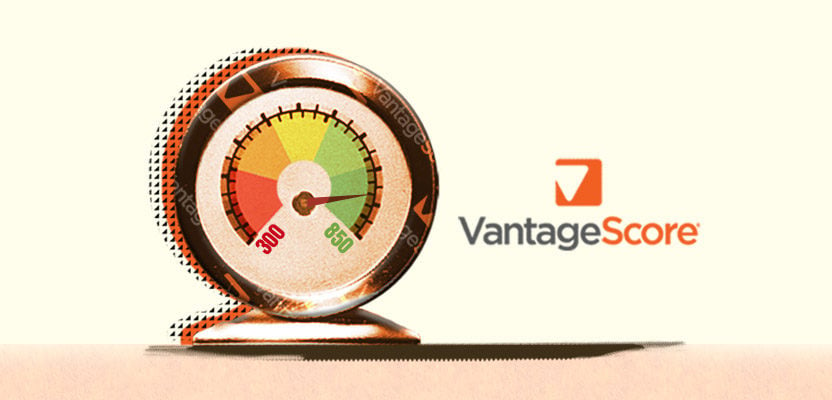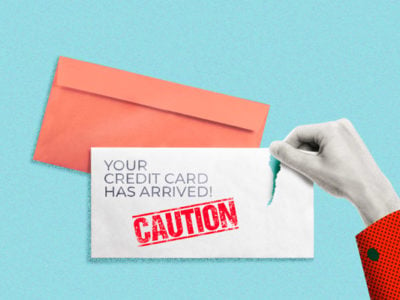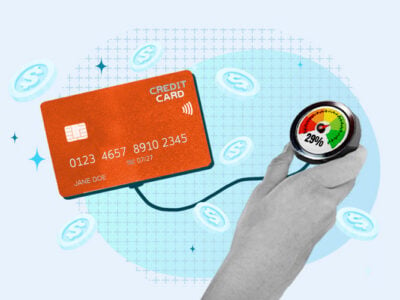Table of Contents
What is VantageScore?
VantageScore is a consumer credit rating company that produces a model that creates credit scores. VantageScore was originally created in 2006 by the three credit bureaus—Experian, TransUnion, and Equifax—to serve as an alternative to the FICO credit scoring model, which was created in 1989. 1 2
Although FICO is the leading credit scoring model in use today, VantageScore is its main competitor. 3
VantageScore’s algorithms assess the information on your credit report to create a three-digit credit score ranging from 300 to 850 that indicates your creditworthiness, or how reliable you are as a borrower.
VantageScore updates these algorithms every few years to create a new version of their scoring system. So far, there are four different VantageScore models:
- VantageScore 1.0
- VantageScore 2.0
- VantageScore 3.0
- VantageScore 4.0
What is VantageScore used for?
Creditors use VantageScore to check whether you’re a reliable borrower—in other words, whether you’re likely to pay back your debts.
Lenders check your credit score when you apply for new loans or lines of credit. For instance, they may use your VantageScore to decide whether you qualify for any of the following:
- Mortgages
- Personal loans
- Auto loans
- Credit cards
They’ll also use your score to decide how much to lend you and at what interest rate. The higher your score is, the more credit you’ll be able to get and the better (i.e., lower) your interest rate will be. 4
Who uses VantageScore?
Thousands of lenders and 9 of the top 10 biggest banks use VantageScore credit scores. 5
VantageScore also sometimes provides their scores to non-financial institutions. A study by the consulting firm Oliver Wyman (hosted on VantageScore’s website) claims they provided around 4.9 billion scores to the following groups between July 1, 2018 and June 30, 2019: 6
- Landlords
- Utility and mobile contractors
- Government entities
- Asset managers
- Insurers
- Retailers
Although VantageScore is widely used, FICO is still more popular. FICO claims their scores are currently used by 90% of lenders. 7
What affects your VantageScore credit score?
The information that appears in your credit reports affects your VantageScore. To calculate your score, VantageScore takes the many pieces of data in your report, organizes them into several categories, and assesses each one to determine how reliable you are as a borrower.
Some categories are more important than others, depending on the weighting that VantageScore assigns them (shown in the table below as a percentage). For example, payment history is the most important category, and the amount of available credit you have is the least important.
| Payment History | Credit Utilization | Depth of Credit | Recent Credit | Balances | Available Credit | |
|---|---|---|---|---|---|---|
| VantageScore 3.0 | 40% | 20% | 21% | 5% | 11% | 3% |
| VantageScore 4.0 | 41% | 20% | 20% | 11% | 6% | 2% |
The factors that determine your VantageScore are very similar to the ones that determine your FICO score. This means that if your score in one model is good, your score in the other one will probably be good as well, and vice versa.
What is a good VantageScore credit score?
The range of “good” VantageScores starts at 661, with anything above 780 being considered “excellent.” The maximum possible score is 850, and the minimum is 300.
There’s a certain degree of subjectivity when it comes to judging what makes a good credit score. Every creditor has a different idea of what a good score is (and what score you need to have before they’ll extend you a given type of credit).
VantageScore gives the following ranges for each class of scores, from excellent to very poor: 8
- Excellent: 781-850
- Good: 661-780
- Fair: 601-660
- Poor: 500-600
- Very poor: 300-499
VantageScore’s older models use a different range
VantageScore’s initial models (1.0 and 2.0) used a different scale of 501 to 900 points. However, starting with VantageScore 3.0, they moved over to the same scale as FICO. Now, both credit scoring models range from 300 to 850 points. 9
Regardless of which model you’re using, a higher score always means you have better credit.
VantageScore vs. FICO: what’s the difference?
VantageScore and FICO are the two main credit scoring models. Overall, they’re quite similar. Lenders use them in the same ways, and the same behaviors influence your score in both models.
Generally speaking, to perform well in either model, you have to:
- Build a solid payment history
- Develop a healthy credit mix with both installment loans and revolving credit accounts
- Keep your credit utilization rate low (in other words, don’t use too much of your available credit)
- Avoid opening too many new accounts so that the length of your credit history (i.e., your average account age) remains high and you don’t trigger many hard inquiries
Many of the differences between VantageScore and FICO relate to how they weigh the factors that affect your credit score. For instance, FICO places greater emphasis on credit utilization. It determines 30% of your score in FICO’s model and just 20% in VantageScore’s.
FICO and VantageScore also weigh the data points that influence their scoring factors differently. For example, VantageScore assigns more weight to late mortgage payments than other types of late payments, in contrast to FICO’s model, which they claim treats all late payments the same. 10
The impact of these differences is typically fairly minor, although it’s enough that you may have different credit scores in the two models. As mentioned, if you have a good credit score in one model, you’ll probably also have a good score in the other.
Which model is more lenient?
VantageScore is more lenient than FICO in some ways. FICO requires you to have a credit history of at least six months before they’ll assign you a score, whereas VantageScore can calculate your score with just one month’s worth of history. 10 11
According to documents produced by the Federal Deposit Insurance Corporation (FDIC), many consumers’ VantageScores skew higher than their FICO scores. 12
However, there are also several ways in which VantageScore is less lenient than FICO. For example, when you apply for new loans, it gives you a “grace period” of two weeks during which multiple applications won’t harm your score. 13 FICO gives you a much longer grace period of 45 days. 14
How to get your free VantageScore credit score
You can get your free VantageScore credit score from any of the organizations listed on VantageScore’s website.
If you don’t want to go through one of these companies, you can also get your VantageScore from the three credit bureaus:
- Equifax offers your VantageScore for free on their website
- TransUnion also offers your VantageScore, but you have to sign up for an account to get it
- Experian currently only provides FICO scores on their website, but you can call them at (877) 903-5999 to get your VantageScore
Because not all lenders report to all three bureaus, the VantageScores you receive from each bureau may differ slightly from each other.
Takeaway: VantageScore is one of the two main credit scoring models
- VantageScore’s model is similar to FICO’s, and provides information about your borrowing behaviors.
- Lenders may use your VantageScore credit score to decide whether you qualify for new lines of credit, such as credit cards, mortgages, personal loans, and auto loans.
- Lenders may also use your VantageScore credit score to decide how much to lend you and at what interest rate.
- Your VantageScore falls between 300 and 850, with anything over 661 considered to be “good.”
- Your VantageScore and FICO credit scores are calculated in similar ways, and if you usually pay your bills on time, both of your scores will probably be good.







